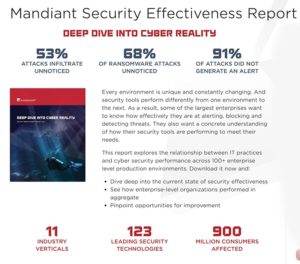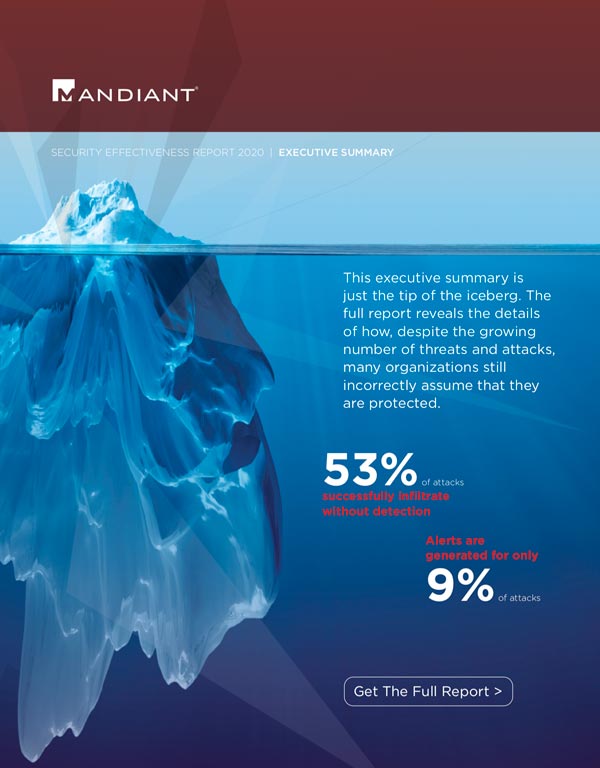FireEye released the Mandiant® Security Effectiveness Report 2020 which reveals data about how well organizations are protecting themselves against cyber threats and the overall effectiveness of their security infrastructure.
The report summarizes the results of thousands of tests performed by experts from the Mandiant Security Validation (previously known as Verodin) team. The tests consisted of real attacks, specific malicious behaviors, and actor-attributed techniques and tactics run in enterprise-level production environments representing 11 industries against 123 market-leading security technologies — including network, email, endpoint, and cloud solutions. The report reveals that while organizations continue to invest significant budget dollars in security controls and assume that this means assets are fully protected, the reality is that a majority of the tested attacks successfully infiltrated the organizations’ production environments without their knowledge. Additionally, the report includes guidance to help organizations ensure that their security controls perform as expected by implementing a strategy that includes continuous security validation.
A Snapshot of Security Effectiveness Challenges
In the tests, 53 percent of attacks successfully infiltrated environments without detection. 26 percent of attacks successfully infiltrated environments but were detected, while 33 percent of attacks were prevented by security tools. Alerts for only 9 percent of attacks were generated, demonstrating that most organizations and their security teams do not have the visibility they need into serious threats, even when they use central SIEM, SOAR and analysis platforms.
In conducting its analysis, the Mandiant Security Validation team observed that the most common reasons for poor optimization of organizations’ security tools were:
- Deployed under default “out-of-the-box” configurations
- Lack of resources to tune and tweak post-deployment
- Security events not making it to the SIEM
- Inability to force controls testing
- Unexpected changes or drift in the underlying infrastructure
The report also takes a deeper look into techniques and tactics used by attackers and outlines the primary challenges most commonly uncovered in enterprise environments through security validation and conducting testing:
- Reconnaissance: In testing network traffic, organizations reported only 4 percent of reconnaissance activity generated an alert
- Infiltrations & Ransomware: 68 percent of the time, organizations reported their controls did not prevent or detect the detonation within their environment
- Policy Evasion: 65 percent of the time, security environments were not able to prevent or detect the approaches being tested
- Malicious File Transfer: 48 percent of the time, controls in place were not able to prevent or detect the delivery and movement of malicious files
- Command & Control: 97 percent of the behaviors executed did not have a corresponding alert generated in the SIEM
- Data Exfiltration: Exfiltration techniques and tactics were successful 67 percent of the time during initial testing
- Lateral Movement: 54 percent of the techniques and tactics used to execute testing of lateral movement were missed
In addition to the above insights and most likely underlying causes of each issue, the Mandiant Security Effectiveness Report 2020 offers real-world examples that demonstrate the negative impact these performance gaps have caused in various industry sectors.
To download a full copy of the Mandiant Security Effectiveness Report 2020, including a list of the 10 fundamentals for successful cyber security effectiveness validation, visit https://www.fireeye.com/ser2020.



